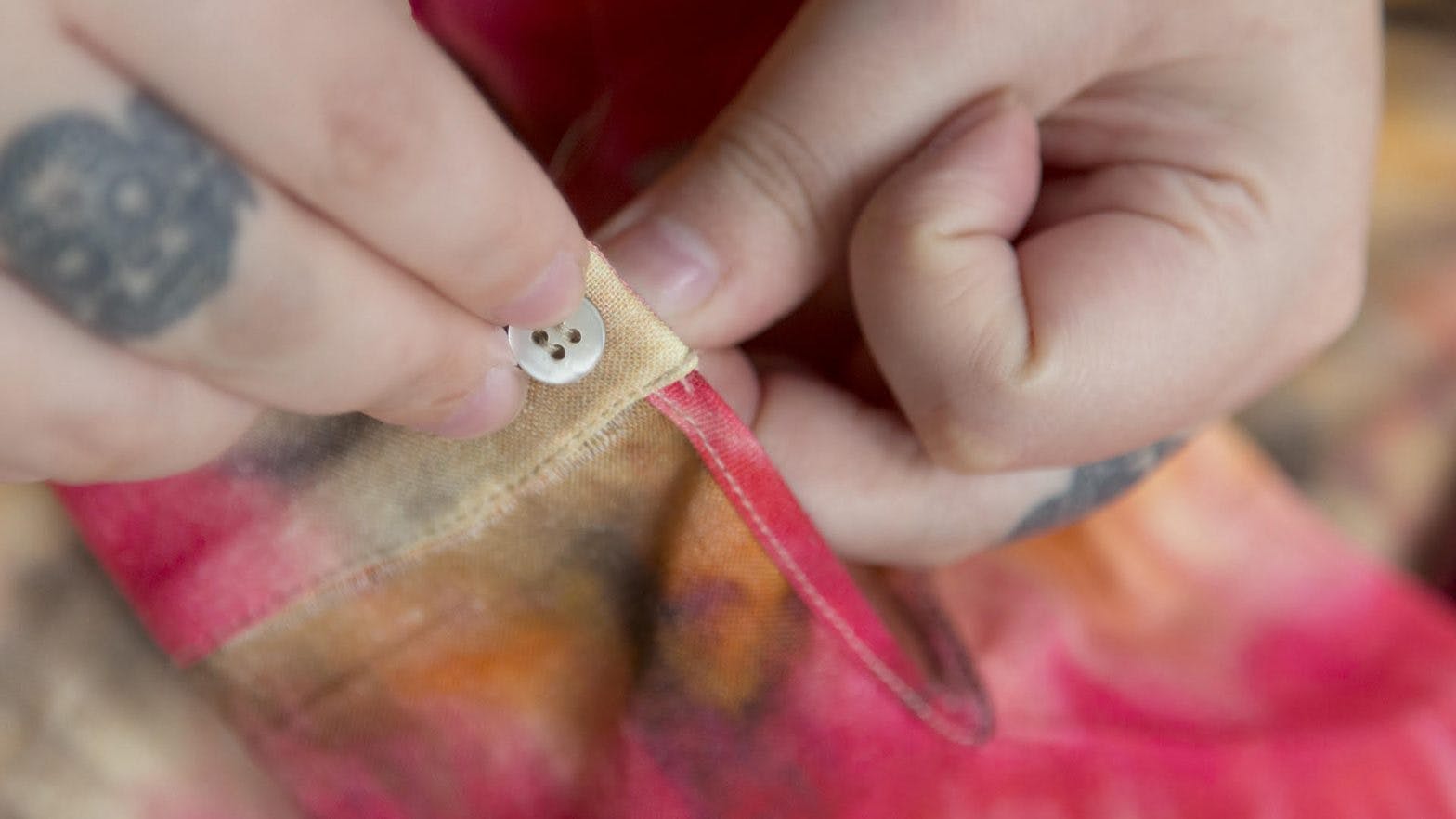
According to Ellen MacArthur Foundation’s “A new textiles economy” Report, 2017 “Every second, the equivalent of one garbage truck of textiles is landfilled or burned. An estimated USD 500 billion value is lost every year due to clothing being barely worn and rarely recycled. If nothing changes, by 2050 the fashion industry will use up a quarter of the world’s carbon budget.”
We believe that caring for our clothes is also caring for the planet. Extending the lives of the clothes we own is one of the best things we could do on your way to sustainability.
Repairing clothes reduces waste and is more sustainable than buying new items. Extending the life of clothes by just nine extra months of active use would reduce carbon, water and waste footprints by around 20-30% each.
Mending and repurposing clothes helps diminishing waste while giving a new life to the clothes once worn and loved.
Research commissioned by London Recycles highlighted that although Londoners are eager to repair and re-use things, 72% feel they are losing repair skills, over two thirds would repair more items if they knew how.
We are happy to present Rosalind Studd, co-founder of Repair What You Wear, A free website teaching everyone to mend; from threading a needle, buttons, hems, to repairs in knitwear and jeans. Whether you need refreshing or are a beginner, it’s friendly and helpful.
Rosalind started her career as a retail buyer, and at that time the emphasis was put a lot on the design of the product. Gaining expertise in Product development, in the knitted and woven but also in the interior sector; she was frequently travelling to India, and had the opportunity to work with craftsmen. The industry wasn’t as big as it is today; the hierarchy of employment meant that very often the craft people ceased to be recognised as skilled and were started to be taken more for mass production. As the industry globalised, the working conditions of the workers unfortunately worsened.
At some point she decided she wanted to work for more than just a profit and return. Rosalind worked for many years for many major charities before deciding to retrain as a teacher in order to go back to her roots in textiles.
She trained as a design and technology teacher; which enabled her to learn about fibers and fabrics development. As a visiting lecturer, Rosalind always aims to make students understand about fibers and fabrics as she considers it is the root of successful design. Sustainability comes from design. “If you understand the fibers, you will know the characteristics which will make you understand how the garment will respond when you will create and use it.”
After being asked about the sustainability of fibers and materials, Rosalind shared the following interesting points.
The interesting fact about cellulosic clothes is that, being extracted from cellulose fibers they can biodegrade, they can easily be integrated in circular systems and therefore seem to be a better choice for the future. However as it is cheap to produce and to print, it quickly becomes a material of choice for fast fashion retailers that use it massively which leads to huge amounts of trees to be chopped down. Furthermore, it is not a very robust material either meaning that the lifecycle of items will be shorter and therefore will not always be as environmentally friendly as it could be.
Cotton on one side has characteristics that makes it unique as it is highly absorbent and wears a long time, but parallelly it consumes huge amounts of water. For instance, 73% of cotton fields have to be irrigated, 16% of the world pesticides are used on cotton production and today around 20% of cotton production is linked to “modern day” slavery in western China.
Repair What You Wear
RWYW is a unique, free to access website that teaches and inspires anyone to easily mend their own clothes.
Roslind founded Repair What You Wear with her partner Elahe Alavi, a graphic designer originally from Iran currently based in the UK.
The vision behind Repair What Your Wear is to go right back to the basics. “There is no point in making it arty, let’s make it comfortable and accessible to everybody.” If you learn those basic mends with RWYW you can mend around 80% of any clothing. The platform is meant to be free, filling in that role that society has failed to accomplish, encouraging people to reduce waste, save money.
“Overconsumption is a big thing; as clothes get cheaper, people would feel that it is unnecessary to mend and garments would end up in landfills; now we know it is very necessary.”
On top of reducing the environmental impact of clothing, financial savings can be achieved with mending; Rosalind estimates that every single mend saves a minimum of 10 pounds.
Repairs used to be considered irrelevant as clothes got cheaper; people would feel that it is unnecessary to learn. But now we feel that it is totally necessary. Realising that many people, regardless of their background or where they are from, do not know how to simply replace a missing button; clothes would end up in landfills if not in charity shops.
Rosalind Tips to consumers:
- If there is a hole and it’s small, fix it – you don’t have to be an artist to mend.
- If there is an item that is too long, shorten it.
- If there is an item that you never wear, find somebody who will.
Discover RWYW Youtube channel here.